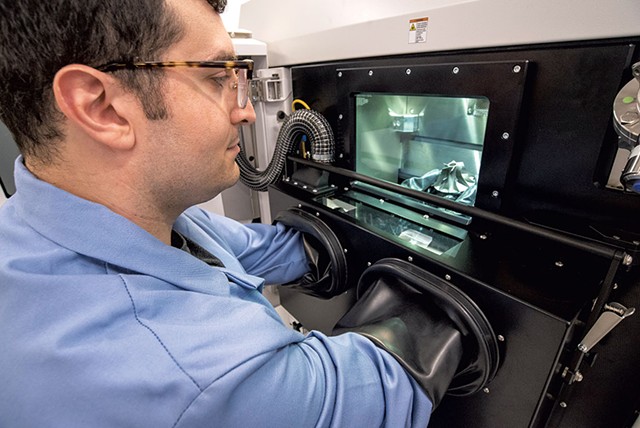
- Jeb Wallace-Brodeur
- Engineer Nikolas Eliopoulos working with metal additive technology at the Advanced Manufacturing Center
Benchmark Space Systems, a Burlington company that makes satellite propulsion equipment, had a rocket engine with a problem last winter. The coffee cup-size engine, which helps maneuver small satellites as they orbit in space, had been flagged in Benchmark's testing, and the company's engineers wanted to know what was wrong.
The company usually sent parts to out-of-state laboratories, but in this case, Peder Nilsson, Benchmark's newly hired supply chain VP, called the Advanced Manufacturing Center at Vermont State University-Randolph.
The rocket engine was scanned the next day, giving engineers in Burlington the images they needed to diagnose the problem. Nilsson was impressed. While scanning, printing and machining services do exist in New England, getting results usually takes at least two weeks. That kind of delay can push Benchmark off the schedule of the rocket launches — such as Elon Musk's SpaceX — that the satellites use to hitch rides into space.
"If your system isn't ready, Elon isn't going to wait for you," Nilsson said. "He's going to launch."
In the past eight or nine months, Benchmark's relationship with the Randolph center has evolved into a partnership — Nilsson now works with the lab almost every week.
The Advanced Manufacturing Center is part of a federal initiative that seeks to reverse the migration of manufacturing jobs to overseas factories. Vermont business groups started work on it in 2019 with an $11 million U.S. Department of Defense contract.
The center provides access to technology that's normally not available to small and medium-size companies in Vermont. Among other things, it allows manufacturers to try equipment out before deciding whether to buy their own; works as a contractor itself, creating prototypes based on manufacturers' designs; analyzes parts with CT scanners; connects Vermont State University and local high school students with companies that need workers who have learned to use the machines; and provides training on advanced manufacturing technology. That includes a computer-controlled CNC machine that uses electron beams and other advanced technology to shape metal.
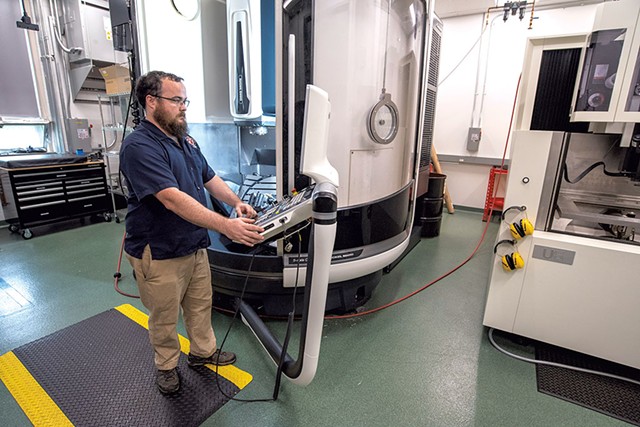
- Jeb Wallace-Brodeur
- Engineering student Eric Hannett working with a five-axis CNC mill at the Advanced Manufacturing Center
It took a few years for the Randolph project to get up to speed, but now it's also home to sophisticated 3D printing equipment known as additive technology, which creates objects by adding tiny layers of material in a process that sometimes takes hours. It also provides subtractive technology, which removes material.
Traditional 3D printers generally work by pushing melted plastic filament through a nozzle over a design to create a part layer by layer. The center in Randolph offers six polymer printers and two that apply fine metal powder in a thin layer and fuse it with a laser. Some of the models in Randolph are around the size of a toaster oven. One minivan-size German import cuts and mills metals and plastics with five rotating arms. Together, these 3D printers have become a major component of the center's offerings.
"This is really disruptive technology, and it transforms the way you can design parts," said Chris Coulter, the advanced manufacturing technology adviser at Vermont Manufacturing Extension Center, a nonprofit that provides an array of services aimed at helping Vermont manufacturers. VMEC is housed at VTSU-Randolph, and Coulter's job is to connect manufacturers with the center's technology.
Buying and maintaining these machines can cost hundreds of thousands of dollars. But when used in place of traditional machining methods, 3D printing can carve weeks off the process of producing prototypes and custom parts. Industry analysts say 3D printing also reduces waste by producing lighter products and can use just one process to create a part that previously required an assembly of smaller components. It can also reproduce parts that are no longer available from an original manufacturer.
3D printing technology has upended manufacturing in the past decade or so, according to Patrick Boyle, VMEC's CEO and director. It replaces a lot of the machining, such as the metal cutting, drilling and shaving that still is standard in machine shops — including manual skills that are being taught at VTSU-Randolph.
"It's the next phase of the industrial revolution, if you like," Boyle said. "Now you can do all that on one machine by building it and programming it with whatever material will work in the machine."
He noted that 3D printing isn't expected to replace traditional machining anytime soon. It's just too expensive.
"They'll work in tandem for a while," Boyle said. "Not everything needs to be done in the advanced way."
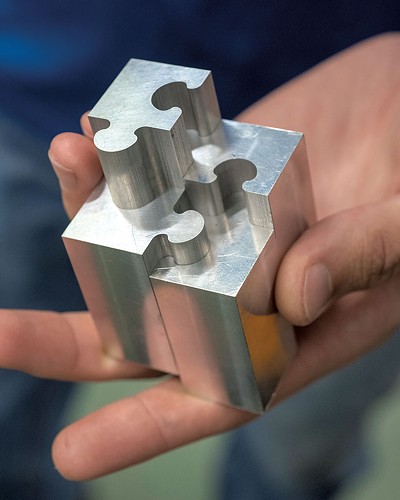
- Jeb Wallace-Brodeur
- A demonstration piece cut from aluminum
Coulter and the Advanced Manufacturing Center's executive director, Barry Hulce, keep an eye out for high school and college student recruits. Sophia Rivera, a junior from Columbus, N.J., who is studying manufacturing engineering and electrical engineering at VTSU-Randolph, started school with a focus on electromechanics before a conversation with Hulce led her to a position in the center. She now plans to get a bachelor's degree in manufacturing engineering and look for an internship in New Jersey.
"I am a very visual person, and this has translated into the work I do for the center," said Rivera, who uses reverse engineering software to create models with CAD, or computer-aided design.
Coulter said lab projects often lead to job offers.
"Students work on real-world problems here," he said.
Entrepreneur Carina Hamel met Coulter when she started looking for a way to etch logos onto the stainless steel water bottles at the center of her 3-year-old Richmond-based company, Bivo. She and her husband, Robby Ringer, customize the bottles made in China for bike racing teams, construction businesses and other customers.
Hamel needed to etch bottles in lots of about 150, but the laser-etching facilities she found required orders of at least 300, far more than any of her customers would need. Earlier this year, an acquaintance introduced Hamel to Coulter. Now, high school and college students who work at the lab use a precise beam of light to burn off the bottles' silicon coating and create a design from a computer file, a service for which Hamel pays the lab $2.50 to $4 per bottle. She then sells each bottle for about $45.
The process is automated; all the workers have to do is make sure the bottle is placed into the machine correctly and then clean it after the etching is completed. Someday, Hamel said, she'd like to buy an etching machine. When she does, the Randolph center will advise her on which one to obtain.
"At other facilities we're just a small company that doesn't give them a lot of business, and we're not top priority," she said.
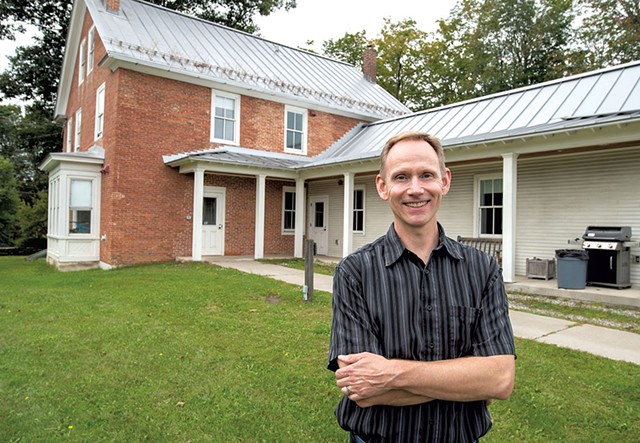
- Jeb Wallace-Brodeur
- Barry Hulce
Coulter, like most of the people trying to recruit workers to the manufacturing field, works hard to dispel the notion that manufacturing happens in dark, noisy factories. He strives to show visitors the quiet environs of a secure and clean laboratory-type setting. He estimated that he and Hulce have led 1,000 visitors on tours of the center in the past year.
"The technology we use involves recycling, reducing waste and high-tech equipment using lasers," he said. "It's not just about machining parts and welding and the traditional skill set."
Federal and state officials work hard to promote U.S.-based manufacturing. The field makes up about 9 percent of Vermont's GDP, a little lower than the national figure of 11 or 12 percent. According to the consulting group McKinsey, the number of U.S. manufacturers has fallen by about 25 percent since 1997.
"We outsource so much," Hulce said. "The U.S. has really given away a lot of its manufacturing capabilities, and we have to reestablish them."
Over the summer, the defense department committed another $1.5 million to improve technology and training at the manufacturing center. The contract will also help regional manufacturers navigate the Byzantine rules and paperwork associated with doing business with the federal government.
"There are a billion acronyms," Hulce said. "It's just a multitude of things you have to overcome."
The Advanced Manufacturing Center survives on federal contracts and its earnings from projects completed for local companies. Hulce said the original $11 million startup contract came with specific instructions.
"The output was to build the center and inspire people to find a passion and a love for advanced manufacturing and help as many companies as you can," he said. "This is the best government project I have ever heard of."

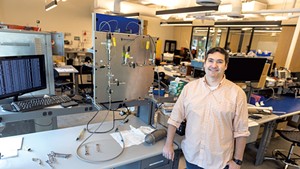









Comments
Comments are closed.
From 2014-2020, Seven Days allowed readers to comment on all stories posted on our website. While we've appreciated the suggestions and insights, right now Seven Days is prioritizing our core mission — producing high-quality, responsible local journalism — over moderating online debates between readers.
To criticize, correct or praise our reporting, please send us a letter to the editor or send us a tip. We’ll check it out and report the results.
Online comments may return when we have better tech tools for managing them. Thanks for reading.